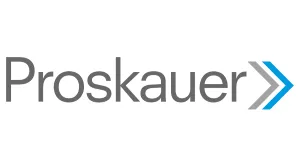- with readers working within the Retail & Leisure industries
- within Environment and Energy and Natural Resources topic(s)
On September 30, 2025, California Governor Gavin Newsom signed into law AB 288, which amends the state's labor law and significantly expands the power of its Public Employment Relations Board ("PERB") to cover private-sector employees currently under the exclusive jurisdiction of the National Labor Relations Board ("NLRB" or "Board").
Under AB 288, PERB can now conduct union elections, process unfair labor practice charges, seek injunctions and penalties against as well as order employers to bargain with unions representing employees who previously were only subject to the Board's jurisdiction. The state law also empowers PERB to issue civil monetary penalties against employers for labor-law violations and order parties to binding arbitration if they fail to quickly agree to a CBA.
AB 288 has a phased rollout through January 1, 2027, in the run-up to which PERB can act where the NLRB has "expressly or impliedly ceded jurisdiction" and gives examples, including when the Board lacks a quorum, if the U.S. Supreme Court holds Board members' job protections to be unconstitutional, or when the NLRB cannot process cases because courts have issued injunctions against its structure or authority on constitutional grounds.
California's legislation comes on the heels of and follows the same logic behind New York's recently enacted "NLRB Trigger Bill" that similarly empowers the Empire State's PERB to step into the shoes of the Board, which we covered here. The NLRB has lacked a quorum for months and as a result remains unable to process appeals from decisions by Board administrative law judges or regional directors in unfair labor practice or representation cases.
However, AB 288 will likely face similar legal challenges to New York's "NLRB Trigger Bill," which the Board has sued over, as we covered here. Specifically, AB 288 may be preempted by the National Labor Relations Act ("NLRA" or "Act"), which covers most private-sector employees, under longstanding Supreme Court precedent.
Indeed, AB 288 anticipates preemption concerns by stating that while the state "recognizes that it cannot take away rights granted to employees under the NLRA, California also recognizes that existing federal law cannot prevent it from doing its part to enforce and further the rights recognized by the NLRA." The California Legislature's analysis of AB 288 also specifically flagged preemption as an enforcement concern.
There are material differences between the NLRA and AB 288, which goes even further than New York's "NLRB Trigger Bill" in expanding labor rights, such that California's legislation may be especially vulnerable to preemption. For example, AB 288 empowers PERB to issue civil monetary penalties of $1,000 against employers per labor-law violation and order parties to submit to mandatory arbitration to complete a CBA after more than six months of negotiations.
By contrast, the NLRB may only order make-whole relief (e.g., reinstatement, backpay, notice posting, bargaining order) and cannot compel parties to submit to binding arbitration during CBA negotiations. Unlike PERB, the NLRB cannot issue injunctions to prevent potential labor-law violators on its own — it must first go to federal court.
Nevertheless, AB 288 permits PERB to "rely on its own decisions and precedent under the National Labor Relations Act, and shall do so in a manner that most expansively effectuates the rights guaranteed under this section."
Given the material differences between the NLRA and AB 288, the NLRB will likely sue California to stop enforcement of the state law — the Board has already sued New York this month to stop that state's analogous legislation. Employers may also sue California, just as Amazon has already sued New York after being hit with what may be the first unfair labor practice charge under the Empire State's newly empowered PERB.
The California Legislature presented the bipartisan legislation to Governor Newsom on September 22 and was backed by the state's labor unions. In 2024, 14.5 percent of California workers were unionized, compared to 9.9 percent of workers nationwide, according to the Bureau of Labor Statistics.
Other relatively union-dense states, such as Massachusetts, are also considering analogous bills to California's and New York's and will likely face similar legal challenges should they enact such legislation.
We will continue monitoring the growing trend of states attempting to circumvent federal labor law and cover any related developments.
The content of this article is intended to provide a general guide to the subject matter. Specialist advice should be sought about your specific circumstances.



